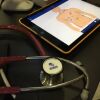When I was first trained in EMS, we were taught and graded on padding the voids between the spine board and body during spinal immobilization. Humans have contours in their spine. Padding helps improve patient comfort.
Forcing patients to lie flat on a rigid board is uncomfortable and cold. It can also cause pressure sores during long transports.
One thing I learned years ago is that pressure on soft tissue that is as little as 32mm of mercury can cause skin to start breaking down. That is why many trauma centers switch the EMS collar out as soon as possible for a softer rehab collar.
Another challenge is keeping trauma patients warm during the cold winter months. Backboards transfer heat away from the body through conduction. They can cause patients at risk for hypothermia to become even colder. More than 60% of all trauma patients arrive at the emergency department with some level of hypothermia, defined as body temperature below 37 degrees centigrade.
Back in the day, the most popular padding in use was towels. But I’ve used dressings, bandage rolls, and trauma pads.
We have some much better options today, which incorporate a variety of functions.
Turley backboard pad
Paramedic Amy Turley developed the Turley Backboard Pad. It is a re-usable gel pad that can be heated or cooled. You can use it to help warm up a cold patient. The Turley Backboard Pad fits on any backboard or immobilization device. It is really pretty easy to clean or decontaminate, and it should last for years.
Here is a great endorsement from an ER physician Mike Hirsig, MD: “The Turley Backboard Pad is a no brainer. Every patient that comes into the ED on a backboard complains of pain from the board. Once the pad is place under them they stop complaining. We also do not have to worry about pressure sores developing while under our care, then not being compensated for that care, because of a preventable injury. Any patient placed on a backboard should have the Turley Backboard Pad under them first.”
The Back Raft
The Back Raft, distributed by Thomas EMS,is another great option. It is a low-cost inflatable air mattress for your backboard. Developed by Bill Hoster of Moore Medical the Back Raft improves patient comfort and virtually eliminates the risk of pressure sores and other secondary injury during transport.
It inflates in seconds, filling the voids between the patient and the backboard. It eliminates pressure points, improves patient comfort and provides an air barrier to prevent conductive heat loss.
The Back Raft was demonstrated to provide important benefits in the Annals of Emergency Medicine study published in 2011. Data from this study indicated that the Back Raft significantly reduced discomfort as well as tissue interface pressure in the occipital, scapula, and sacral regions of the back.
The researchers concluded, “The implementation of an air mattress system analogous to the Back Raft would facilitate the prevention of pressure ulcer formation during pre-hospital care and transportation.”
Hot Cot Backboard Pad
Another new backboard pad is the Hot Cot Backboard Pad. Paramedic Erle Collom from Estes Park, Colorado developed it. His emphasis was originally on preventing heat loss, but it is also a great pad.
The Hot Cot is a high-density closed cell foam pad with an adhesive back. You peel the paper off the backside, and stick it down on the backboard. It is very convenient, fast and easy to use.
This pad serves two purposes; it pads the patient and provides thermal protection. It reflects the patient’s body heat back to the body. The pad will not wick up any fluids.
The pad does not lose any of its properties even when damaged with scrapes and scratches. You can check out a demonstration video here.
Rescue Pad Spine Board
The Rescue Pad Spine Board from Rapid Deployment Products is a backboard with a pad built in. The unique integrated pad reduces pressure point pain and improves comfort.
It is constructed with a seamless design, to prevent cross-contamination and make cleaning easy. The padding itself is also nonabsorbent, contoured, and has beveled edges. It can even be screen-printed.
Vacuum spine immobilizers
Of course, another way to keep patients more comfortable is simply to use a backboard less. We use them way too much, and for too many things. They are not good portable stretchers.
We also do have other good options. The Evac-U-Splint is one of them. These devices automatically pad all the voids and conform to the anatomy. They also are fabulous insulators, being filled with Styrofoam beads.
Making patients more comfortable, preventing hypothermia, and reducing skin breakdown are all important goals. Many years ago I was in a parachuting accident and literally blew L1 into tiny pieces. I will never forget my 45-minute ride on a spine board as being one of the most horrific experiences of my life. These things really hurt, especially if you are left on one too long. Simply padding sensitive areas will go along way in improviing patient comfort.









![RTSTACTICAL BallisticShield[9].jpg](https://lexipol.brightspotcdn.com/dims4/default/b1d1d3c/2147483647/strip/true/crop/2000x1140+0+332/resize/100x57!/quality/90/?url=https%3A%2F%2Fk1-prod-lexipol.s3.us-east-2.amazonaws.com%2Fbrightspot%2F4b%2F5c%2F3fe58d604f59aed4b71492bbdeb5%2Frtstactical-ballisticshield9.jpg)



